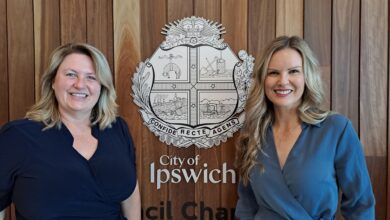About 35,000 people in the state seat of Bundamba will face three different voting systems when they put pencil to paper on 28 March, 2020.
There is full preferential voting for the Queensland Government by-election; optional preferential voting for the mayor of Ipswich; and first-past-the-post for two councillors in their Division 3 Ipswich City Council contest.
That has never happened before in local voting history and unlikely to ever again.
This unique situation has occurred because of long-serving Labor MP Jo-Ann Miller retiring recently after holding the seat of Bundamba for 20 years. The government decided it would save money and make it easier for voters by putting the by-election on the same day as local government elections.
But it has also potentially added to the confusion with new ground being broken in the Ipswich LGA after the previous 10 divisions/1 councillor-in-each were reduced to 4 divisions/2 councillors-in-each for a total of 8 elected, following the 2019 review.
The Electoral Commission of Queensland said the three voting systems individually attracted between 2-6 per cent of informal votes, but it could be higher in Ipswich in March because of the changes and voters being unfamiliar with the process.
For Ipswich’s remaining 100,000 registered voters outside of Bundamba (who will decided the mayoralty and Divisions 1, 2 and 4), they just have to worry about two voting systems.
Today, Ipswich First will try to simplify those systems and explain how you will vote.
The Mayor
There are 7 candidates standing for the top job.
In a local government election when voting for the mayor, you have the choice to vote for one, some or all candidates on the ballot paper; this is optional preferential voting (OPV).
So either just vote 1, or for as many candidates as you want, or 1-7.
The Councillors
There are about 40 candidates standing across the 4 divisions, with about 10 in each. Only 2 people will be elected from each division.
In a local government election for a multi-member divided council, you’ll vote for your councillors using the first-past-the-post (FPTP) voting system.
You’ll mark the box next to the required number of candidates of your choice.
For example, if two candidates are to be elected to council, voters must mark two boxes on the ballot paper.
ECQ’s Bill Hey said his team will accept numbers (as in 1, 2) or two marks/symbols (such as ticks, crosses, or variations).
They will not accept just 1 or one symbol. But they will accept 1, 2, 3, 4, 5 … and just count the 1 and 2 as this was the voter’s intention as his/her choices.
If a voter puts two ticks and then crosses on the rest, that may or may not be accepted. Mr Hey said more advice would be sought to make a ruling.
“That would be problematic, as both ticks and crosses are accepted as confirmation,” he said.
“In reality, numbers are best. There is no room for confusion if the voter puts 1 and 2 on their ballot paper.”
Instructions are printed on every ballot paper and he emphasised to the public to take time reading the instructions before voting.
“If you make a mistake, we can replace your ballot paper – but not if you have put it in the box.”
Bundamba by-election
There are 4 candidates who want to be the new MP for the Ipswich-based seat.
In a state election you must number all boxes in order of your preference, this is full preferential voting (FPV).
FPV means numbering every box on the ballot paper in your preferred order. Simple as that: 1, 2, 3 and 4.
Electoral Commission staff will be available at the voting booths on the day to support electors with any voting system queries.
Read more
>>>Candidates locked in for council elections


